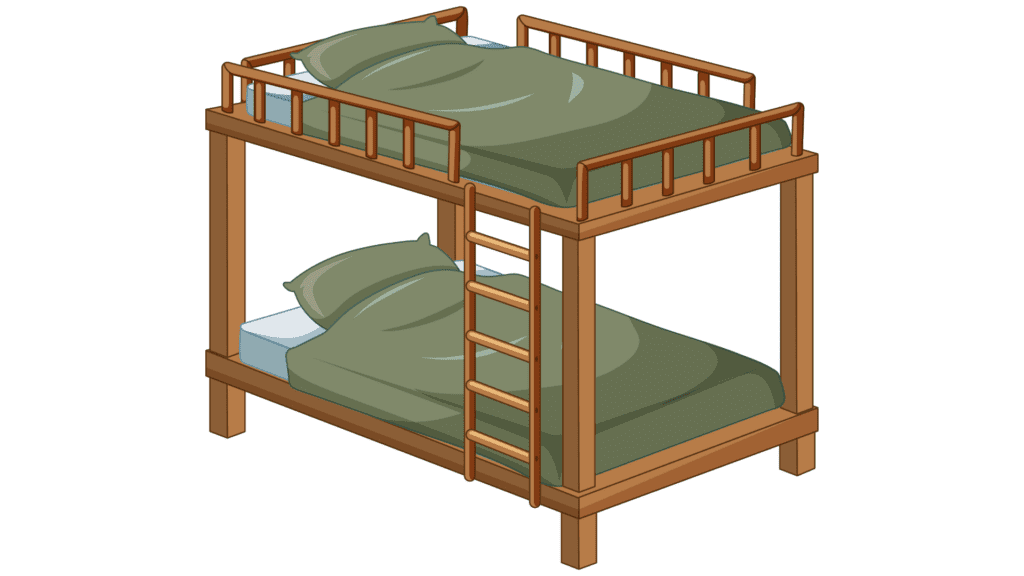The Pros and Cons of Bunk Beds for Kids

Bunk beds have become a popular choice for children’s bedrooms, offering unique advantages and potential drawbacks for families to consider. These space-saving sleeping arrangements can transform a room’s functionality while providing an exciting element for kids. Bedkingdom bunk beds maximize vertical space, allowing for more floor area in smaller rooms and creating additional room for play or storage.
Parents often find bunk beds appealing due to their versatility and cost-effectiveness compared to purchasing separate beds. They can be particularly beneficial for siblings sharing a room or for accommodating sleepovers. Some models even incorporate desks or storage solutions, further enhancing their practicality.
However, safety concerns are paramount when considering bunk beds for children. The elevated sleeping position of the top bunk presents a fall risk, especially for younger kids. It’s crucial to ensure proper safety measures are in place and to follow age recommendations for top bunk use. Additionally, some children may find climbing ladders challenging or feel anxious about sleeping at heights.
Key Takeaways
- Bunk beds maximize space and offer versatility for children’s rooms
- Safety considerations are essential when choosing bunk beds for kids
- Age-appropriate designs and proper safety features are crucial for optimal use
Evaluating the Benefits of Bunk Beds
Bunk beds offer several advantages for families with children, making them a popular choice in many homes. They provide practical solutions for space constraints, adaptability, and opportunities for social development.
Maximizing Space in Small Rooms
Bunk beds are an excellent space-saving solution, especially in smaller bedrooms. They utilize vertical space efficiently, freeing up valuable floor area for other activities or furniture. A standard twin bunk bed can save up to 20 square feet compared to two separate beds.
This extra space can be used for desks, dressers, or play areas. Many bunk bed designs incorporate built-in storage options like drawers or shelves, further optimizing the room’s layout. Some models even feature a pull-out trundle bed, providing additional sleeping space for guests without taking up permanent floor space.
For families living in apartments or homes with limited square footage, bunk beds can be a game-changer in creating functional living spaces.
Adapting to Different Needs
Bunk beds offer versatility that can adapt to changing family needs. Many models can be separated into two individual beds as children grow older or if they move to separate rooms. This flexibility makes bunk beds a long-term investment for families.
Some designs feature a full-size bed on the bottom and a twin on top, accommodating children of different ages or sizes. Others incorporate a desk or futon on the lower level, creating a multi-functional space for studying or lounging during the day.
For guest rooms, bunk beds provide extra sleeping capacity without permanently dedicating space to rarely used beds. This adaptability makes them a practical choice for various living situations.
Promoting Social and Developmental Interaction
Bunk beds can foster positive social interactions and developmental benefits for children. Sharing a room and bunk bed often encourages siblings to bond, teaching them valuable lessons in sharing and cooperation.
For many children, having a bunk bed adds an element of fun to bedtime routines. The top bunk can feel like a private treehouse, stimulating imagination and providing a sense of independence. This can make the transition to bedtime smoother for some children.
During sleepovers, bunk beds offer a practical sleeping arrangement that can enhance the social experience. They create a camp-like atmosphere that many children find exciting, potentially making these events more enjoyable and memorable.
Understanding the Concerns and Limitations
Bunk beds come with important safety considerations and practical challenges that parents should carefully evaluate. While they offer many benefits, there are potential drawbacks to keep in mind.
Navigating Safety and Accessibility Issues
Safety is paramount when it comes to bunk beds for children. Proper guardrails are essential to prevent falls, especially for younger kids. Many models include built-in safety features, but parents should ensure they meet current safety standards.
Accessing the top bunk can be tricky for some children. A sturdy ladder or steps are crucial, but may still pose difficulties for kids with limited mobility. Some children might feel anxious about sleeping up high.
Night lights can help reduce risks of accidents in the dark. However, the top bunk’s occupant may find it harder to reach light switches or outlets.
Addressing Practical Challenges
Making the bed on the top bunk can be a chore. It often requires climbing up and down multiple times, which can be frustrating for kids and parents alike.
Some children may feel claustrophobic in the bottom bunk, especially if the ceiling is low. This can lead to discomfort or sleep issues for some kids.
Bunk beds can limit room layout options due to their size and shape. They may not fit well in rooms with sloped ceilings or awkward dimensions.
Noise can be an issue, as movement on the top bunk may disturb the bottom sleeper. This can be particularly problematic if children have different sleep schedules.
Conclusion
Bunk beds offer both advantages and drawbacks for families considering them for children’s rooms. They can maximize space efficiently and provide a fun sleeping environment for kids. However, safety concerns and potential challenges with cleaning and bedmaking must be carefully weighed. Parents should assess their specific needs, room layout, and children’s ages when deciding if bunk beds are the right choice. Ultimately, bunk beds can be a practical solution for many households when used responsibly.
